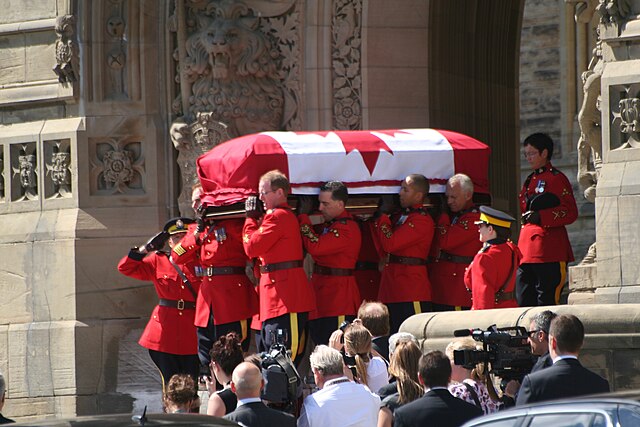A state funeral is a public funeral ceremony, observing the strict rules of protocol, held to honour people of national significance. State funerals usually include much pomp and ceremony as well as religious overtones and distinctive elements of military tradition. Generally, state funerals are held in order to involve the general public in a national day of mourning after the family of the deceased gives consent. A state funeral will often generate mass publicity from both national and global media outlets.
The coffin of John Curtin, Prime Minister of Australia from 1941 to 1945, lying in state inside King's Hall, Old Parliament House, Canberra, on July 6, 1945
State funerals in Canada are public events held to commemorate former governors general, prime ministers, other members of the cabinet who died in office, and, at the cabinet's discretion, other eminent Canadians. With ceremonial, military, and religious elements incorporated, state funerals are offered and executed by the governor general-in-council, who provides a dignified manner for the Canadian people to mourn a national public figure. Provincial and territorial governments may also perform state funerals for citizens in their particular jurisdictions. However, most state funerals are federal affairs.
The remains of John A. Macdonald lying in state in the Senate Chamber, 1891
The funeral train of John A. Macdonald, pulled by Canadian Pacific no.283, carrying his remains on 10 June 1891 from Ottawa to Kingston, Ontario
Jack Layton's casket being moved from the Centre Block of the parliament buildings after lying in state
The funeral procession of Thomas D'Arcy McGee in Montreal, 1868





